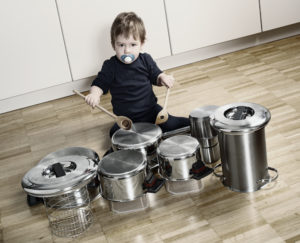
During the first six years of life our brains are developing at a tremendous rate, creating a foundation for life-long learning and accomplishment.
Research shows that children under six with enriched learning environments are more likely to complete college, to have successful marriages and to have less problems with the legal system than their peers who did not have the same learning interventions.
Children are born to naturally learn and to confidently engage, while forming attachments, with the people and objects around them. This positive engagement and attachment with people create essential social and emotional skills in the child. The frequent back-and-forth interaction with caring adults early in a child’s life forms the emotional development for a life of successful relationships.
This variety of experiences with differing challenges in the context of human relationships creates deep meaning in a child’s psyche. When these important experiences are not happening, a child will let us know. Most children under the age of two years who cry and aren’t wet, hungry, tired or sick are simply…bored.
Bored. Bored. Bored.
The bored child is crying out for challenging and meaningful experiences. The child cannot connect meaningfully to a DVD, TV set or computer game. The child requires caring people to help him or her get in touch with positive life-affirming activities.
The child comprehends from early on that the adults in his or her environment are the purveyors of these meaningful experiences. The adult’s preparation of an environment with new, intriguing and purposeful activities is crucial to the child’s developing brain.
The playthings or tools a child needs for these brain-stimulating activities involve these characteristics:
- The child’s creative manipulation, not the child watching the toy or activity passively
- The child’s making of sounds instead of passively listening to recorded sounds
- The child has pieces to assemble, take apart and put together again, and the objects won’t break
An example of an activity that most children love to do during the period of time between crawling and mastering walking is getting into the pots and pans. The child will pull out all the pots and pans, bang lids, try to place the lids on top of different pans, stack the pans, and more. The child who is walking may carry each pan to a different room. This child-selected pots and pans activity meets the three criteria for a brain-stimulating activity.
What is interesting is if we give the child enough time and not interrupt his or her actions, the child will return every item back to the cabinet. I’ve watched a seven-month-old ”explore” the pots and pans for two hours one evening, then return the next morning to the pots and pans left out overnight on the kitchen floor, returning each item to the cabinet.
In our hurried world we rarely give our children the time they might need to fully experience the challenging and meaningful activities their brains crave for growth.
he young child needs opportunities for meaningful activities, and that requires lots of time with people, as well as time to explore and interact with physical objects.
Give the gift of your time, quantity as well as quality. A child needs both.


One Response to “Brains Love Opportunities for Meaningful Learning”